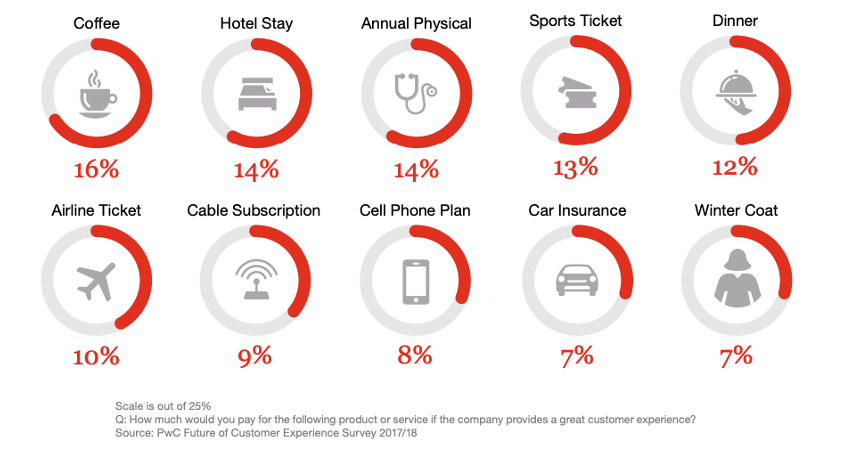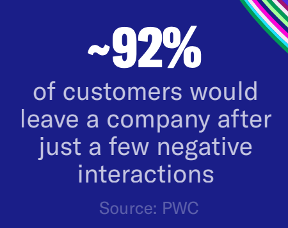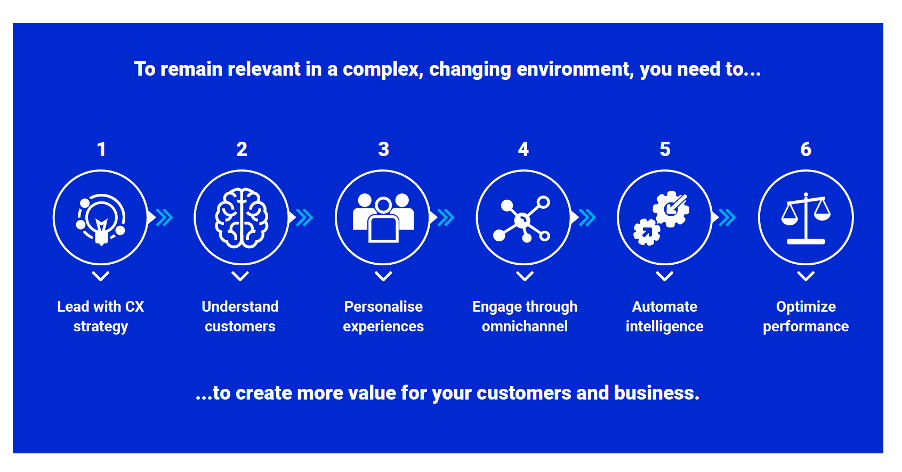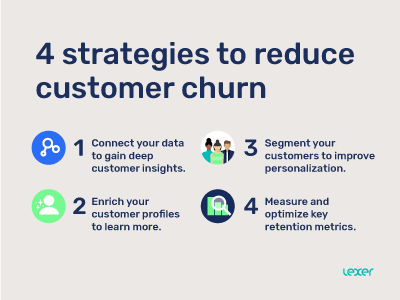Why brands can’t afford to not prioritize CX initiatives
December 9, 202192% would leave after just a few negative experiences with brands.
A price worth paying?
With over 45% of businesses prioritizing customer experience over pricing and product development, it’s important to understand the value of customer experience to see if the ROI really stacks up.
Customer experience aka CX has been growing in importance over recent years, with 86% of customers now saying they’d pay more for a product or service for better customer experience.
Research highlights that people are prepared to pay a price premium for products and services. In fact, people would be willing to pay 16% extra for a coffee and 7% more for car insurance. Stating that they value efficiency and convenience above all in terms of their customer experience, with time being a precious commodity amongst most of us these days.

Higher margins certainly sound like a good enough financial reason for companies to invest in customer experience as a way to retain and grow the value of their customer base.
Most businesses measure key performance indicators (KPIs) such as Customer Satisfaction Scores (CSAT) and Net Promoter Scores (NPS). These drive customer experience initiatives within companies such as voice of the customer (VOC) and other customer-centric initiatives.
Nowadays, these initiatives consider traditional and digital feedback mechanics and extend to social media buzz and sentiment to assess how customers really feel about brands.
And we’re all familiar with the availability of online reviews and publicly available posts that can shift perception of a brand and directly impact their customer acquisition strategies.
Word of mouth (WOM) got digital and the old adage of bad experiences getting shared 10 times more than a good one stays true. The reality is that customers aren’t prepared to put up with negative experiences.
In fact, 92% would leave after just a few of them – and so with a churn rate like that, the cost of a bad experience could be a huge chunk of revenue.

The power shift from brand to customer has happened, and it’s here to stay. Greater transparency is a good thing, and it has undoubtedly forced a lot of brands to up their game, whether they’re responding in real-time on social media to customer queries with automated and helpful signposting or ensuring their call centers are clued up with the most up-to-date information about their customers, so they can offer them a truly personalized experience that makes them feel understood and catered for.
In an omnichannel world where the customer engages via many channels of choice and convenience, how can you define customer experience in a nutshell?
Blake Morgan, Customer Experience Futurist, says: “I believe that a great customer experience is personalized, timely, relevant, effortless/simple, seamless, remarkable, memorable, and consistent.”
Blake’s interpretation of great customer experience is bang on, in my opinion, and aligns with our approach to creating more meaningful customer engagements at NGDATA.
We’ve developed data science over a decade to ensure that the art of customer experience feels seamless to customers and is effortless on the part of the business user.
NTT’s 2020 Global CX Benchmarking Report outlines the below approach to remain relevant in today’s changing environment and to create value for customers and brands.

It’s great to see so many synergies across sources that corroborate what NGDATA’s Intelligent Engagement Platform enables brands to do. And that’s to create truly personalized experiences that engage customers by demonstrating that they are understood and automate intelligent decision-making to provide the next-best-experience via real-time interaction management.
If you are interested in finding out more about the Intelligent Engagement Platform and how it could help you enhance your customer experience, contact us or find out more here.


